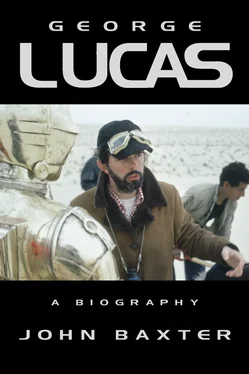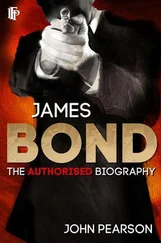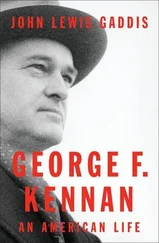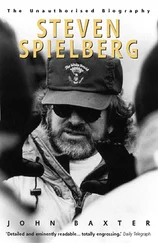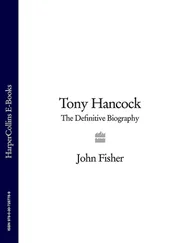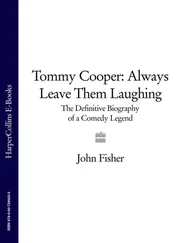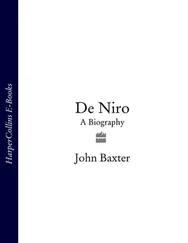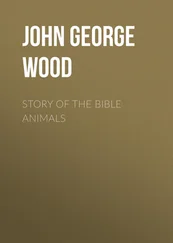Just before Thanksgiving, 1967, Coppola confided to Lucas that he was starting work on his next film for Seven Arts, and that he had a spot for him in the crew.
The shoot on Finian’s Rainbow was expiring in a gaudy sunset of mutual congratulation. For $3.5 million, Coppola had delivered a film that looked as if it could well have cost $15 million. But he knew the film would fail. The important thing was to get another one up and running before anyone at Seven Arts realized it too. Fortunately, his stock stood so high with the company that they agreed not only to produce his original screenplay, The Rain People , but to let him direct it as well. Armed with their backing, Coppola persuaded IATSE to waive its rules and let him shoot the film his way, with a small crew, moving from location to location as the mood took him. Technically, a unit shooting outside Los Angeles was supposed to hire men from the district branch, or ‘Local.’ If they insisted on using their own technicians, they still had to pay a local crew, as had happened on Mackenna’s Gold , even if the men simply sat about playing pinochle.
Coppola told IATSE his film was actually a documentary, and so should be exempt from union rules. The union cautiously agreed to at least discuss giving Coppola special consideration. Taking this for carte blanche , he wheedled some money out of Seven Arts and assembled a scratch crew with an old friend, Bart Patton, who became the film’s line producer.
Coppola based The Rain People on an incident from his childhood when his mother, after a family argument, left home and checked into a motel for two days. His heroine, Natalie Ravenna, is a married woman who, finding she’s pregnant, goes on the road to ‘discover herself She drives across country, picking up hitch-hikers, falling into relationships with people, only to shed them and move on. She discovers something about herself, but only at the expense of others. ‘Killer’ Kilgannon, a brain-damaged football player she picks up, calls her ‘a rain person.’ In one of Coppola’s more portentous lines, he explains, ‘The rain people are made of rain, and when they cry, they disappear, because they cry themselves away.’ In the end, after having been unable to help Killer, and watching him cheated and humiliated, Natalie stands by helplessly as he battles with Robert Duvall, a cop with whom she has become involved sexually, and Duvall’s daughter shoots him.
Killer was played by James Caan, who’d been at Hofstra University with Coppola, and had gone on to Hollywood stardom in Howard Hawks’s Red Line 7000 and El Dorado , and Robert Altman’s Countdown . Coppola flew Caan to Hofstra to shoot a crucial sequence: the football game in which Killer is injured. The trip delighted Lucas, as did the way Coppola brushed away the problems of guerrilla filmmaking as if they were fluff on his jacket. They couldn’t afford a cinematographer or lights? Why not shoot everything with a 16mm Bell & Howell, hand-held? It would look more authentic anyway. No sound recordist? Didn’t matter – George could record sound. George, as it turned out, could also carry the camera equipment, find props for the few staged scenes, act as production manager, and almost everything else.
It was a reminder to Lucas of his student film days, and of his time on the race-car circuit. Nothing could have been more different from the elephantine shoot of Finian’s Rainbow . This was surely the filmmaking of the future, an American nouvelle vague , distinguished by the qualities that François Truffaut had described as typical of American film-making – ‘grace, lightness, modesty, elegance, and speed.’ Walter Murch said, ‘I think for Francis and George, that film was the prototype. If they could operate making a film out of a storefront in Ogallala, Nebraska – and do it successfully – then there was no reason why they should live in Hollywood.’
But Coppola almost immediately chilled Lucas’s enthusiasm. How was the THX treatment going? Lucas confessed he hadn’t looked at it in weeks.
‘You’ve gotta learn to write,’ Coppola told him sternly. ‘Nobody will take you seriously unless you can write.’
Lucas explained that writing exhausted him, both physically and mentally, but Coppola told him he was going about it the wrong way. ‘He said, “Look, when you write a script, just go as fast as you can. Just get it done. Don’t ever read what you’ve written. Try to get it done in a week or two, then go back and fix it, and then go back through as fast as you can, and then go back and fix it – you just keep fixing it. But if you try to make each page perfect, you’ll never get beyond page ten.”’ He also suggested Lucas read Shakespeare, his own personal inspiration.
Coppola persuaded Warners to option THX for $3000, then told Lucas that that would be his salary for working on The Rain People . Throughout the shoot Lucas got up at 4 a.m., laboriously wrote a scene for THX , in pencil, in crabbed capitals in the sort of lined ‘blue books’ he’d used for school exams, then started the day’s work. Not all such stories have happy endings, however. ‘I finished it,’ says Lucas, ‘and showed it to him, and he said, “This is terrible. I think we ought to hire a writer.”’
Coppola found a playwright with some feature-film credentials prepared to work for very little, and set him to work rewriting the screenplay. Meanwhile, Lucas scrounged a 16mm camera and a Nagra tape recorder, and suggested making a documentary on the production. Coppola, a pushover for self-promotion, skimmed $12,000 from the publicity budget to pay for it.
Spending more and more time in New York while Marcia continued to work on commercials in Los Angeles was placing a strain on their relationship, and Marcia finally flew east in February 1968. One of Lucas’s jobs was scouting locations, and on a wet Sunday in February he took Marcia to the next one on his list, in Garden City, Long Island, and proposed to her.
In April 1968 Coppola went back to Hofstra to shoot another football game, and late in the summer the Rain People caravan of seven vehicles and twenty people started to roll across America. Lucas was on board, but not Marcia. At the start of filming, Coppola magisterially banned wives and girlfriends from the shoot, ignoring the fact that a VW van trailing the caravan carried his wife Eleanor, their two children and, as babysitter, a teenager named Melissa Mathison, later the screenwriter of E.T.: The Extraterrestrial and wife of Harrison Ford.
As well as the cast, the caravan included a recreational vehicle fitted with a Steenbeck so that editor Barry Malkin could cut the film as they went along. The cameraman was Bill Butler, who later shot Jaws for Steven Spielberg. Everyone kept in touch via two-way radio. Footage was airlifted to New York every day, and rushes normally caught up with them three days later – too late to reshoot if Coppola had second thoughts. In Ogallala, Nebraska, editor Malkin finally called a halt. He needed time to assemble the mountain of material, so the crew camped at the Lakeway Lodge while Coppola occupied an old shoe store downtown as a production office, where Malkin spent five weeks making a preliminary cut.
Lucas persuaded Coppola to hire Marcia as cutting-room assistant. When Lucas rang to tell her, he sensed some resistance. Haskell Wexler had asked her to work on his feature Medium Cool , which he was both directing and shooting against the background of the Democratic National Convention in Chicago. Once the convention became the focus of riots over the war in Vietnam, he’d had the audacious idea of setting a fictional story about a reporter at the heart of the disturbances, and shooting it with lightweight camera and fast stock, just like the cinéma vérité directors. Wexler’s invitation to work on the film excited and flattered Marcia, but she loved Lucas enough to turn it down and leave for Ogallala. Fortunately, Wexler delayed editing, so she was able to work on both films.
Читать дальше
